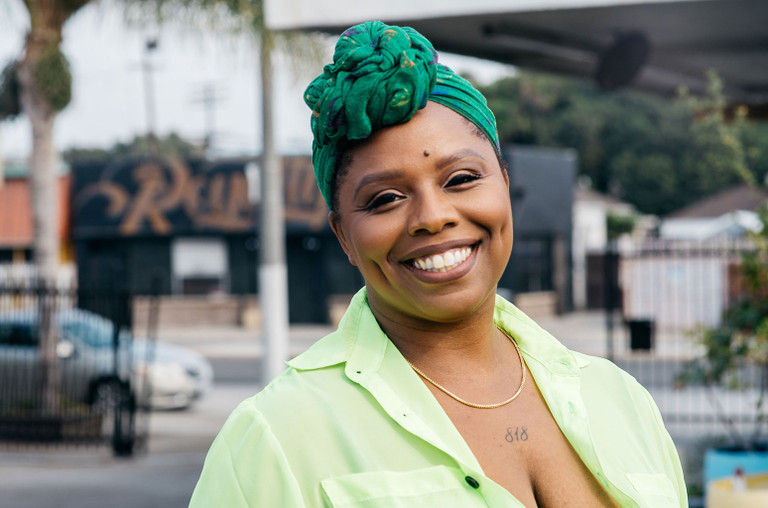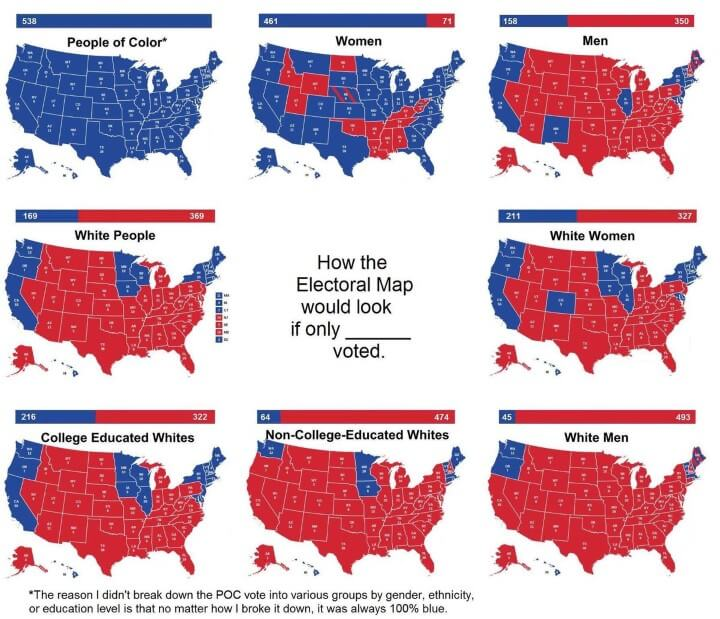On Thursday, Nov. 12, Patrisse Cullors, an internationally recognized artist, activist, and advocate for civil rights and social justice spoke in a zoom webinar entitled Beyond the Hashtag: The Art and Activism of #BlackLivesMatter. Cullors was the co-founder of the Black Lives Matter movement and the trending hashtag: #BlackLivesMatter.

Cullors is a Los Angeles native. She was A Glamour Magazine Woman of the Year, in 2016 and recently was included in Time Magazine’s “100 Most Influential People of 2020.” During Thursday evening’s webinar, Cullors took questions from moderators Raquel Ramos, Dean of the Marshall Center for Intercultural Learning, Josh Stenger, Professor of Film Studies and English, Jordan Pericles ‘21, and over 400 attendees.
Cullors explained that the Black community won this election, and yes, yes they did! First of all, having Trump out of office is a win for POC, the LGBTQ+ community, females, and essentially all minority groups. Also, it is a win because of POC, the LGBTQ+ community, females, and essentially all minority groups, specifically Black women, who carried the election. Cullors explained that the only reason that anyone in power does anything is because we have spoken up. We have to continue to speak up. We voted out Donald Trump, and this is how we hold people accountable: We vote!

When asked how being an artist and activist long before the BLM movement, impacted her part later in the BLM movement, Cullors responded that this movement uses artists and creative people that show up for the movement and help to globalize it in order to spread messages about it. Cullors said, “As an artist, I have always felt that art should be something that we use.”
You may also be wondering: How do art and pop culture enable the politics of the movement? To this, Cullors explained that the hashtag #BlackLivesMatter is well thought out. It is plain and minimalistic, which is beneficial since it helps it go viral on social media, and can be used easily in art and pop culture. It is concise, easy to say and remember, powerful, and has grown to mean so much more than just black people fighting against police violence.
The next question addressed by Cullors was as follows: BLM has been compared to the Civil Rights Movement. What are the advantages and disadvantages of having so many leaders for this movement? The Civil Rights Movement had many leaders too, not just Martin Luther King Jr., although he is the most talked about. Cullors explained this point by saying that there have always been multiple leaders, especially in the Civil Rights Movement, not just MLK. In fact, Black women have always been the architects, like Ella Baker, an African-American civil rights and human rights activist, who did a lot of her activism work behind-the-scenes. There have always been black women in charge. Now, they are just more strongly refusing to be silenced.
Next, Cullors was asked, how the success of the movement is measured. She replied that we won this election, we voted out white supremacy and we created a pipeline for black success in the United States. These are all amazing accomplishments that are a massive reflection of success. However, I would like to add that although we did win this election, and we voted out a leader who condoned white supremacy, that doesn’t mean that we can stop fighting and advocating for what is right. We still settled for Joe Biden, and even with Kamala Harris being the first African-American woman Vice President-elect, this only created a platform for change and progressiveness, it is not an automatic cure-all for racism and discrimination in the U.S.
Cullors also reminded us that “There’s always a lane for anyone to be part of the movement”. You can always join an organization, or as she said, “join an organization that’s speaking to your spirit”, and if a reputable organization does not exist, build it up.
When asked: What is misunderstood about BLM? Cullors explained that people often misunderstand that BLM is both an organization, and it’s the name of the movement. It’s actually a team of experts, not just the group of people that protest. Cullors also spoke to white allyship and advised to just do it, be an ally, know you’re going to mess up, everyone messes up, just keep doing the work.
Cullors then addressed the fact that three queer women were the founders of the movement. Cullors explained that they’ve really created the space for so many of us to be seen; a space to lift up queer and trans folks in the Black community, where those with intersectional identities can be heard and valued.
To answer the question of: What advice would she offer for moving toward being an anti-racist institution at Wheaton, Cullors responded to continue having conversations like these. Acknowledge when you’re wrong, create safe spaces, and offer resources to POC.
Lastly, when asked how she would respond to people that view BLM as a violent movement, Cullors explained that it’s all misinformation that is being used to make people think the movement is violent. Framing progressive movements as violent has been a tactic used in the past to undermine social movements and is being used now in response to #BlackLivesMatter.
Cullors believes we should “Create a world where all of us can live in it”. It is important to remember that our political values should not be formed around whether human beings can live and survive. Political beliefs should not be dictated by whether or not one should have fundamental human rights! Cullors has accomplished so much and is an incredible activist. We were so fortunate to hear her speak and answer questions for us here at Wheaton.